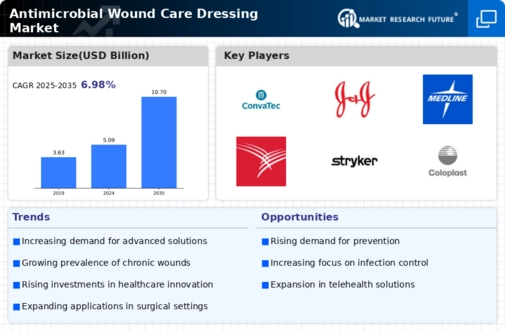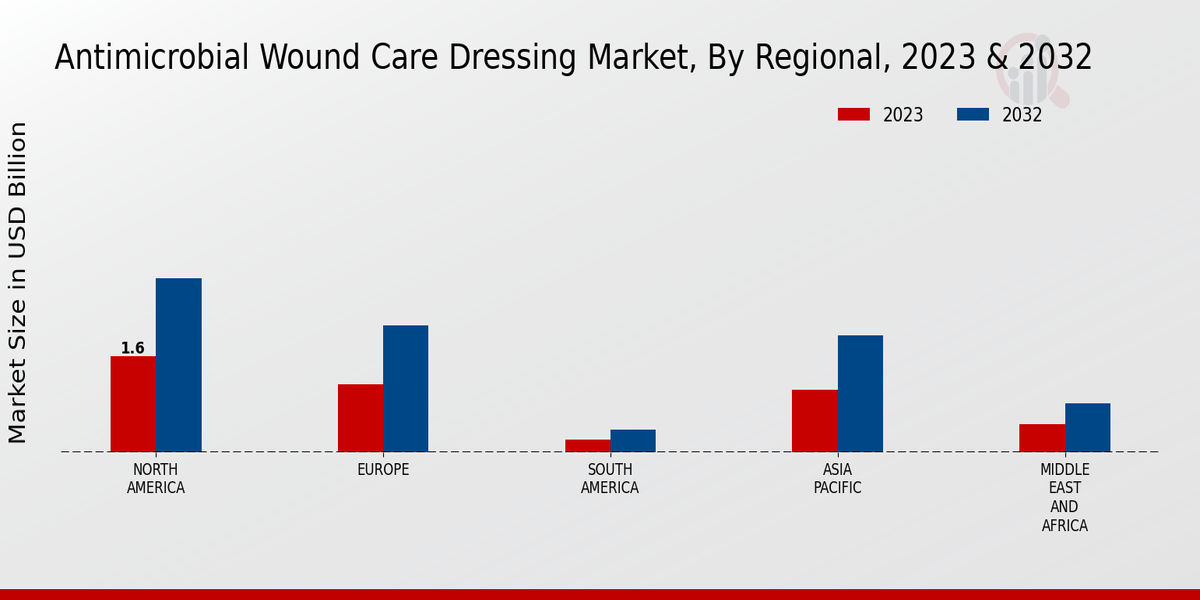Market Growth Projections
The Global Antimicrobial Wound Care Dressing Market Industry is projected to experience substantial growth over the coming years. With a market value anticipated to reach 5.09 USD Billion in 2024 and further expand to 10.7 USD Billion by 2035, the industry is on a trajectory of significant development. The expected compound annual growth rate (CAGR) of 6.99% from 2025 to 2035 indicates a robust market environment, driven by factors such as technological advancements, rising chronic wound incidence, and increasing awareness of infection control. These projections highlight the potential for innovation and investment in the wound care sector.
Growing Geriatric Population
The global increase in the geriatric population is a significant factor influencing the Global Antimicrobial Wound Care Dressing Market Industry. Older adults are more susceptible to chronic wounds due to age-related factors such as reduced skin elasticity and comorbidities. This demographic shift necessitates effective wound care solutions tailored to the needs of elderly patients. With the World Health Organization projecting that the number of people aged 60 years and older will double from 12% to 22% by 2050, the demand for antimicrobial wound care dressings is expected to surge, further propelling market growth.
Rising Healthcare Expenditure
The escalation of healthcare expenditure globally is a crucial driver for the Global Antimicrobial Wound Care Dressing Market Industry. As countries invest more in healthcare infrastructure and services, there is a corresponding increase in the availability and accessibility of advanced wound care products. This trend is particularly evident in emerging economies, where rising disposable incomes and improved healthcare systems are facilitating greater adoption of antimicrobial dressings. Consequently, the market is poised for growth, supported by the increasing financial commitment to healthcare and wound management solutions.
Rising Incidence of Chronic Wounds
The increasing prevalence of chronic wounds, such as diabetic ulcers and pressure sores, drives the Global Antimicrobial Wound Care Dressing Market Industry. As the global population ages, the incidence of these wounds is expected to rise, necessitating effective treatment options. For instance, it is estimated that chronic wounds affect approximately 6.5 million patients in the United States alone. This growing patient population underscores the need for advanced wound care solutions, propelling the market's growth. The Global Antimicrobial Wound Care Dressing Market is projected to reach 5.09 USD Billion in 2024, reflecting the urgent demand for innovative dressing solutions.
Technological Advancements in Wound Care
Innovations in wound care technology significantly contribute to the expansion of the Global Antimicrobial Wound Care Dressing Market Industry. Advanced materials and technologies, such as hydrocolloids, alginates, and silver-based dressings, enhance healing and reduce infection rates. These advancements not only improve patient outcomes but also increase the efficiency of healthcare delivery. For example, silver-infused dressings have been shown to reduce infection rates by up to 50%. As healthcare providers increasingly adopt these technologies, the market is expected to grow, with projections indicating a rise to 10.7 USD Billion by 2035.
Increasing Awareness of Infection Control
Heightened awareness regarding infection control in wound management is a key driver for the Global Antimicrobial Wound Care Dressing Market Industry. Healthcare professionals and patients alike are becoming more cognizant of the importance of preventing infections in wounds, particularly in surgical and chronic cases. This awareness has led to a greater demand for antimicrobial dressings that provide effective barriers against pathogens. As a result, the market is likely to experience robust growth, with a projected compound annual growth rate (CAGR) of 6.99% from 2025 to 2035, reflecting the increasing prioritization of infection prevention in wound care.

















